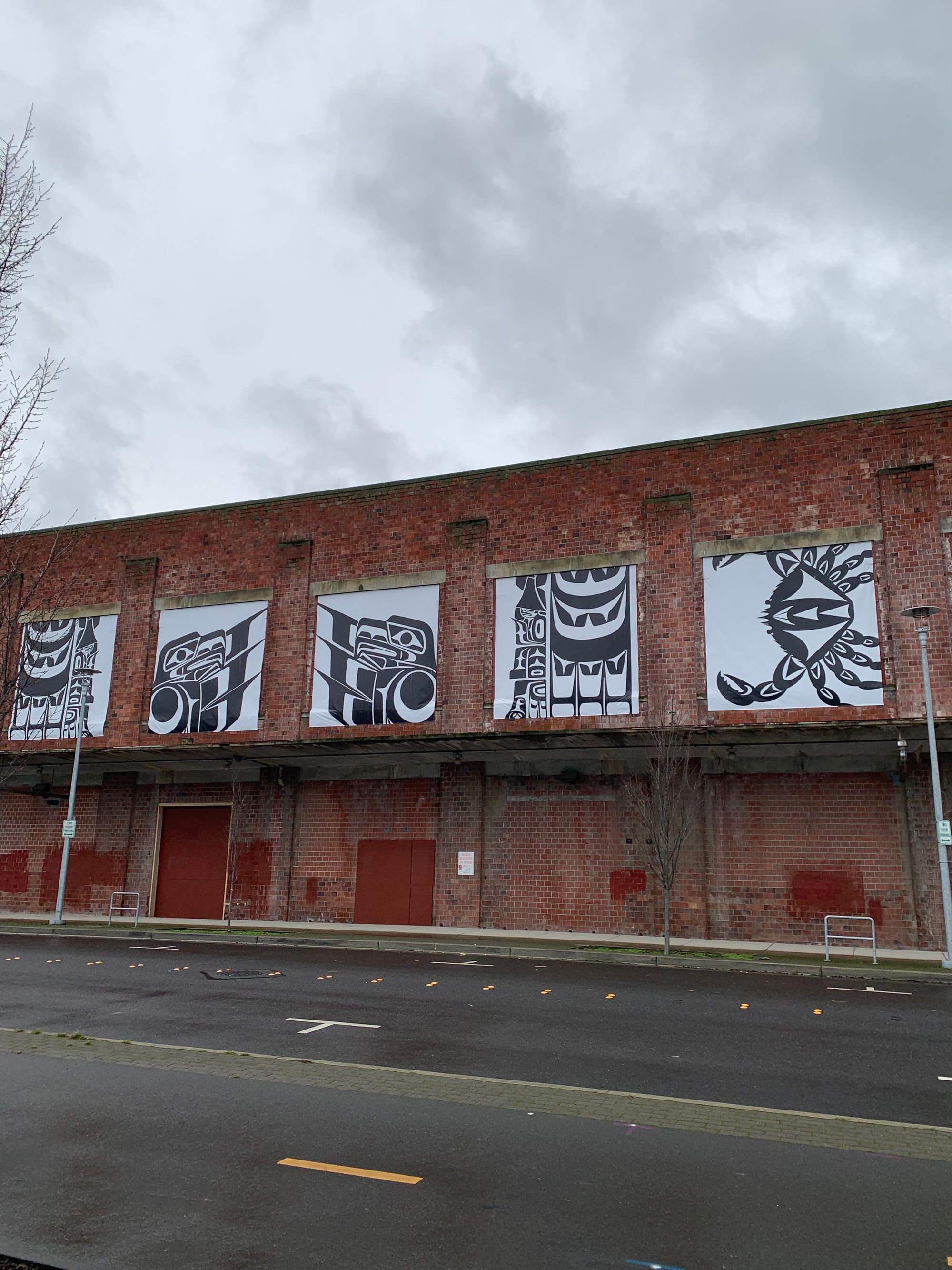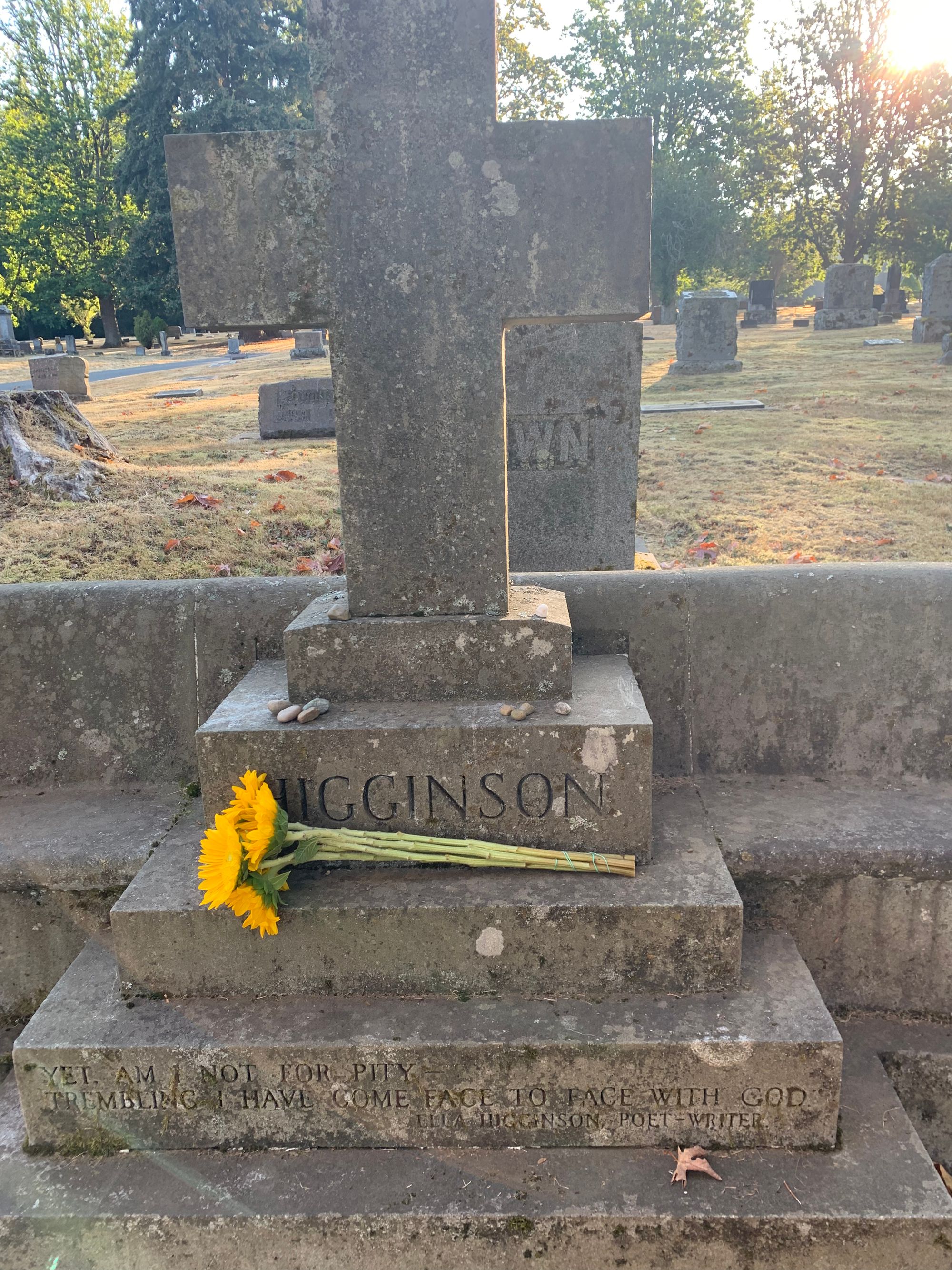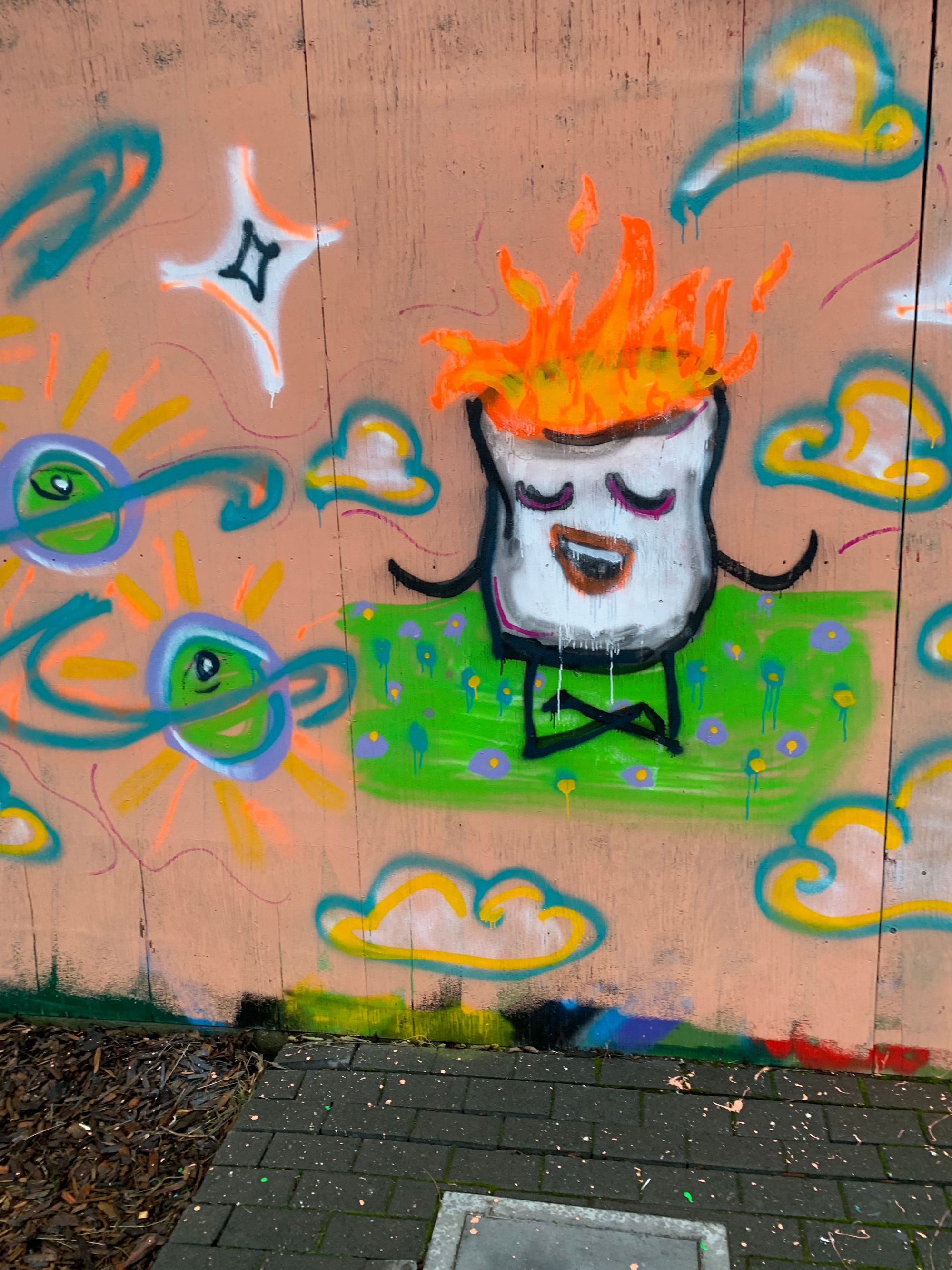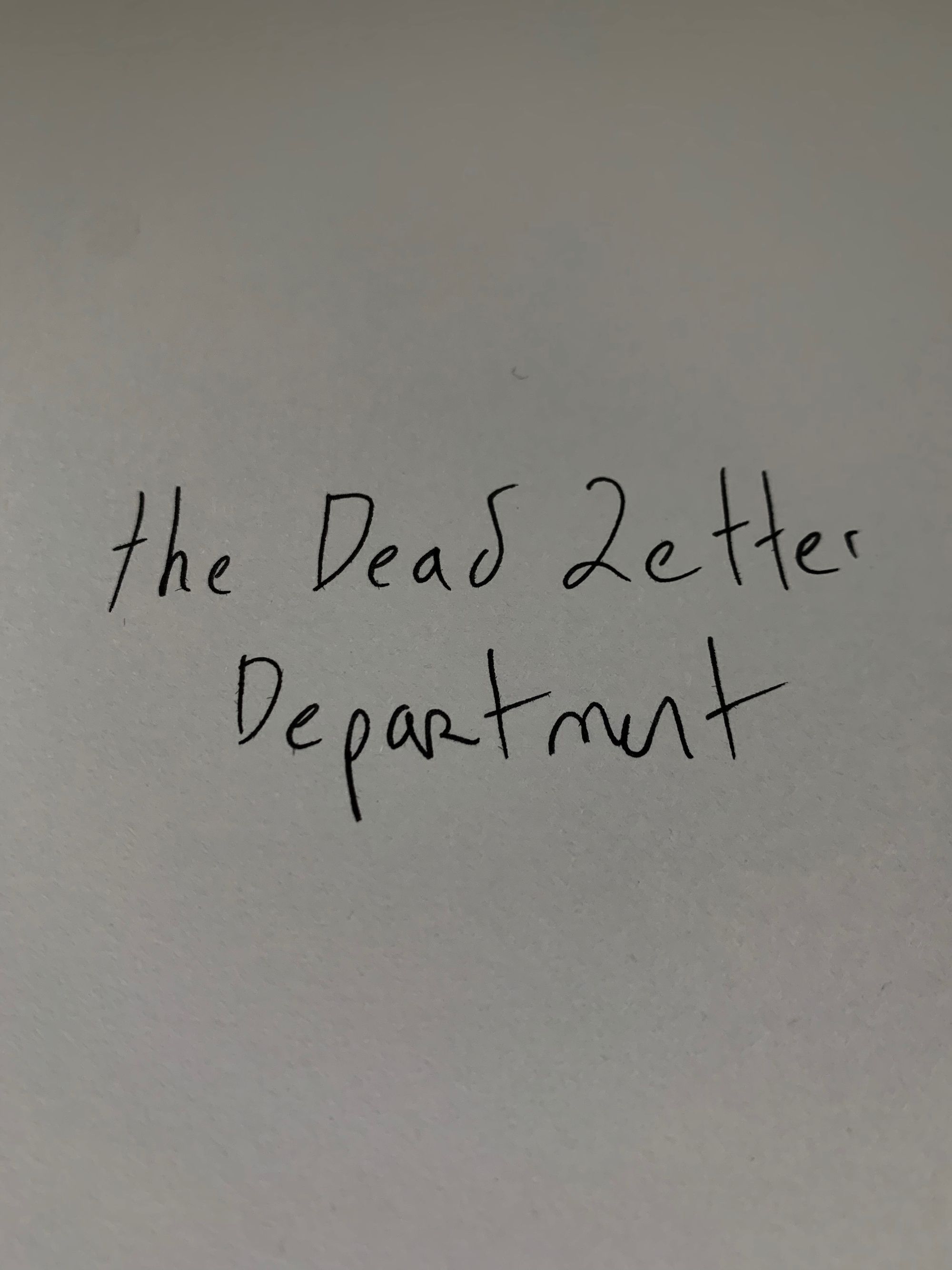Dead Letter Department #50

ella higginson
I saw her grave before I found her work, passing it dozens of times before I stopped to read the inscription. The graveyard I usually walk in old for the area, although it’s an infant compared to some I’ve been in, & one of the things I like best about it is the way the long gone and recently departed are mixed together. Some sections are largely new, of course, but there are places where quite fresh stones are settling in amongst moss-covered monuments that have been there for a hundred years, & I think it must make for good neighbors.
This stone in particular I’d noticed largely because there were so often flowers placed there—different types of flowers, home-grown, store-bought bouquets, wild picked, laid on the small stone steps built into the stone. “Yet am I not for pity,” it reads, “trembling I have come face to face with God,” which is a line from her own work, and after it is her name, Ella Higginson, poet-writer. I particularly love the hyphen there. Not a poet, comma, writer, or just a writer, but a poet-writer, and, after all, that is truly some next level writer shit—out of all the possible epitaphs & memorials in the world, a vast literature, to decide that the words you most want to inscribe on your tomb are your own. I don’t plan on a headstone for myself, I’m much more of an ashes scattered in the sea kind of a guy, but it’s interesting thought, what would be important enough to carve into stone.
She was, at the height of her career, the most popular writer working in the Pacific Northwest, but I suspect unless you’re local & have run into her bronze bust at the college or are deeply read in writers of that era, most of us don’t even know her name. I think I have a kind of knee-jerk reaction to see that as some sort of tragedy, but really how much art & culture lasts one single lifetime, let alone several? Isn’t it enough to have been successful in her own time, widely read & beloved while she lived? It’s such a unbelievably high bar, that success is can only be truly achieved with what is essentially immortality.
I got interested enough to order one of Higginson’s books of poetry, When the Birds Go North Again. They might have had it at the library, but I can’t do the library for poetry since I am the slowest reader of verse in the world, & I need to be able to put my little copper tabs in & tote the book around for a while until we get used to each other. It took me a while to get into the cadence of reading it, since it is quite formal language, metered & rhyming, but also, I am delighted to report, extremely horny. There’s a whole poem that’s all about the reasons why the speaker couldn’t be a nun that I found quite charming, largely on account of said horniness, & there is also something lovely about reading mannered poems that reference the familiar place names & nature that I see every day—a whole poem about Semiahmoo spit, a couplet about the red blaze of madrones on Lummi Shore.
I didn’t think the poems were sinking in that deeply, compared to the gut-shot of emotion I sometimes I get from poetry, but since I finished the book a few months ago, the images keep recurring. I look up at a group of firs in that sideways late winter sun & think of them as Higginson’s “tall splintered spears of gold.” The Olympics, through the mist of early morning, “flash & float/like opals linked around a beating throat.” I watched the last dandelions come bravely up at the very end of summer, & thought of them as lighting their “dawn lamps,” just as she described. If the projects attempting to restore her place in the historical pantheon succeed, perhaps there will be more and more of us walking around with her verses in our heads.
In the meantime, I’ll be thinking of them every time I pass where she’s laid, and looking to see who else leaves flowers there.

one good thing

Someplace kept showing me ads for the Menu, although I don’t remember now where it was now, just the glimpse of Ralph Fiennes’ beautiful nose, & snippets of various rich people behaving quite badly in restaurants, but it was enough to make me want to see the movie. It’s classified as a ‘dark comedy horror thriller’ which is too many categories. I thought the horror bit might make it unwatchable by yours truly since I am a huge weenie & have been more than usually plagued by nightmares lately, but there weren’t any of the supernatural elements that make horror movies untenable for me, so if you have a similar problem, I am here to tell you to go queue up the Menu right away.
It’s a movie about, arguably, the worst date ever, about restaurant culture, about rich people & their unspeakable ways, the service industry & the way it eats your heart out. I spent most of the movie obsessed with Ralph Fiennes’ big sad eyes & incredibly expressive face—I think he’s wonderful in this—and I loved Anya Taylor-Joy too.
There’s also a local connection—a famous but now semi-dethroned chef ran an extremely fancy restaurant/bed & breakfast on Lummi Island called Willows Inn for a number of years, accumulating accolades & reviews, & also, eventually, accusations of wage theft, lawsuits, sexual harassment, racist bullying, & hilariously, lying about the where the ingredients came from. The food was supposedly almost entirely locally sourced (one justification for the price tag), but when the stories began to spill out, one of the revelations was that some of the ingredients actually just came from grocery stores—you know, where all the rest of us are shopping too. Apparently, the Willows Inn restaurant was one of the inspirations for the Menu, which was funny enough to make me laugh out loud many times, even though I was watching it alone. We all know these takedowns of powerful people in real life usually mean absolutely jack shit—the family that owned Willows Inn is already opening another restaurant that I’m sure will be wildly successful. The ending of the movie, though—that was truly satisfying.
If you like the newsletter, please share it with a friend or consider subscribing to the secret edition, where I’m writing about transition & shifting identity. You can write up all your thoughts on Ralph Fiennes and send them to me at departmentofdeadletters@gmail.com. I hope to see you here at the Dead Letter Department again soon, & in the meantime, may you have your own dawn lamps to accompany you through this dark season.
